Related Research Articles

Edward Frederic Benson was an English novelist, biographer, memoirist, historian and short story writer.

Mary Mackay, also called Minnie Mackey and known by her pseudonym Marie Corelli, was an English novelist.
Philippa Jane Haywood is an English actress. She won the 2005 Rose d'Or Award for Best Female Comedy Performance for Green Wing (2004–2006). Her other television credits include The Brittas Empire (1991–1997), Chimera (1991) Prisoners' Wives (2012–2013) and Scott & Bailey (2012–2016). In 2018, she played the role of Lorraine Craddock in the BBC television series Bodyguard. In 2019 she appeared in series 4 of the BBC Radio 4 Show The Pin.
Mapp and Lucia is a collective name for a series of novels by E. F. Benson and also the name of two British television adaptations based on those novels.
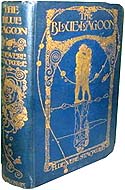
The Blue Lagoon is a coming-of-age romance novel written by Henry De Vere Stacpoole, first published by T. Fisher Unwin in 1908. The Blue Lagoon explores themes of love, childhood innocence, and the conflict between civilisation and the natural world.

Steven James Pemberton is a British actor, comedian, director and writer. He was a member of The League of Gentlemen with Reece Shearsmith, Mark Gatiss, and Jeremy Dyson. Pemberton and Shearsmith also co-wrote and starred in the black comedy Psychoville and the anthology series Inside No. 9. His other notable television credits include Doctor Who, Benidorm, Blackpool, Shameless, Whitechapel, Happy Valley and Mapp and Lucia.

Tilling is a fictional coastal town, based on Rye, East Sussex, in the Mapp and Lucia novels of Edward Frederic Benson (1867–1940).
Riseholme is a fictional Elizabethan village in the Cotswolds in the "Lucia" novels of Edward Frederic Benson (1867–1940). It is thought to have been based on Broadway, Worcestershire.
Emmeline is a female given name. The medieval name, a short form of Germanic names beginning with the element amal meaning "work". It was introduced to England by the Normans.
Lucinda Gane was a British actress, known for her role as the absent-minded science teacher Miss Terri Mooney in the children's television serial Grange Hill, a role she played from 1980 to 1983. In 1985–1986 she played Georgie Pillson's trusty housemaid Foljambe in two series of Mapp and Lucia, adapted by London Weekend Television from the novels of E. F. Benson. She also appeared in Thomas and Sarah, a spin-off from Upstairs, Downstairs, playing Emily Rudge.

Mary Benson was an English hostess of the Victorian era. She was the wife of Edward Benson, who during their marriage became Archbishop of Canterbury. Their children included several prolific authors and contributors to cultural life. During her marriage, she was involved with Lucy Tait, daughter of the previous Archbishop of Canterbury. She was described by William Gladstone, the British Prime Minister, as the 'cleverest woman in Europe'.
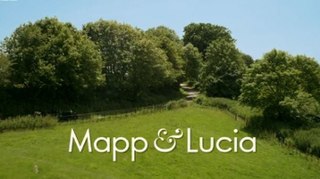
Mapp and Lucia is a British drama television series that was first broadcast on BBC One from 29 to 31 December 2014. The three-part series, adapted by Steve Pemberton and directed by Diarmuid Lawrence, is based on E. F. Benson's Mapp and Lucia collection of novels. The series features an ensemble cast, with Miranda Richardson and Anna Chancellor playing the eponymous characters Elizabeth Mapp and Emmeline 'Lucia' Lucas. It is set in the Sussex coastal town of Tilling, based very closely on Rye, East Sussex, where it was filmed and where Benson lived. Although attracting modest viewing figures, the series received positive reviews from critics.
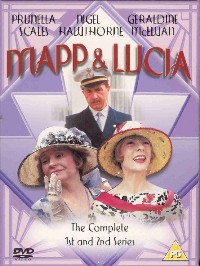
Mapp and Lucia is a British television series, set in the fictional Sussex coastal town of Tilling and based on three 1930s novels by E. F. Benson, beginning with Mapp and Lucia. It was produced by London Weekend Television, filmed in Rye and neighbouring Winchelsea in the 1980s, and starred Prunella Scales as Mapp, Geraldine McEwan as Lucia, Nigel Hawthorne as Georgie, and Denis Lill as Major Benjy. The script was by Gerald Savory. There were ten episodes, broadcast on Channel 4 in 1985 and 1986. The opening title painting was painted by the artist Reg Cartwright. These have been repeated over the years, and a new BBC adaptation, Mapp and Lucia, aired in 2014.
Miss Mapp is a 1922 comic novel written by E. F. Benson. It is the second of six novels in the popular Mapp and Lucia series, about idle women in the 1920s and their struggle for social dominance over their small communities. This book introduces Miss Mapp, the social tyrant of the fictional coastal town of Tilling, and the cast of Tillingites, including Diva Plaistow, Major Benji Flint, Mr. and Mrs. Wyse, and Quaint Irene. Tilling was inspired by the town of Rye, where Benson lived at Lamb House, with his own commanding view of the High Street inspiring Mapp's domain, Mallards.
Lucia in London is a 1927 comic novel written by E. F. Benson. It is the third of six novels in the popular Mapp and Lucia series, about idle women in the 1920s and their struggle for social dominance over their small communities. The second Lucia novel, it is a sequel to 1920's Queen Lucia. In this novel, Lucia leaves her small town of Riseholme and moves to London, where she attacks the city's social life with the same eager ferocity.
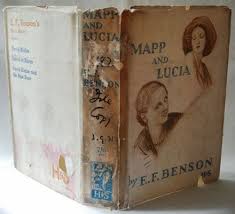
Mapp and Lucia is a 1931 comic novel written by E. F. Benson. It is the fourth of six novels in the popular Mapp and Lucia series, about idle women in the 1920s and their struggle for social dominance over their small communities. It brings together two sets of characters from three previous Benson novels: Emmeline "Lucia" Lucas, Georgie Pillson and Daisy Quantock from Queen Lucia (1920) and Lucia in London (1927), and Miss Elizabeth Mapp and her neighbours from Miss Mapp (1922).
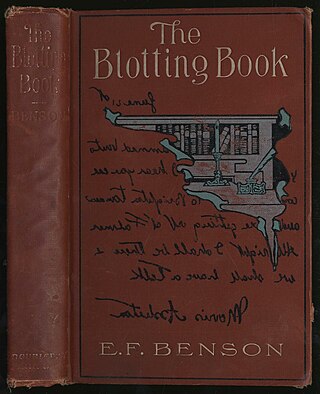
The Blotting Book is a 1908 mystery crime novel by the British writer E.F. Benson, later better known as the author of the Mapp and Lucia series. It was one of only two ventures he made into the genre during his prolific career along with The Luck of the Vails (1901). It takes place in Brighton and the nearby South Downs.

Secret Lives is a 1932 comedy novel by the British writer E. F. Benson, best known as the author of the Mapp and Lucia series. The structure is broadly similar to that series, featuring two strong-willed women battling for social supremacy in the fictitious Durham Square in Edwardian London.
Lucia's Progress is a 1935 comic novel written by E.F. Benson. It is the fifth of six novels in the popular Mapp and Lucia series, about idle women in the 1920s and their struggle for social dominance over their small communities. It continues the story from the 1931 novel Mapp and Lucia, which brought Emmeline "Lucia" Lucas and Georgie Pillson from Queen Lucia (1920) and Lucia in London (1927) together with Miss Elizabeth Mapp and her neighbours from Miss Mapp (1922).
Trouble for Lucia is a 1939 comic novel written by E.F. Benson. It is the sixth and final novel in the popular Mapp and Lucia series, about idle women in the 1920s and their struggle for social dominance over their small communities.
References
- 1 2 3 Kiernan, Robert F. (1990). Frivolity Unbound: Six Masters of the Camp Novel. Continuum Publishing. pp. 67–69. ISBN 978-0826404657 . Retrieved 1 November 2020.
- 1 2 Thesing, William B. (1993). British short-fiction writers, 1880-1914: The Realist Tradition. Gale Research. pp. 32–33. ISBN 978-0810353947 . Retrieved 13 November 2020.
- 1 2 Masters, Brian (1991). The Life of E.F. Benson. Chatto & Windus. pp. 237–240. ISBN 978-0701135669 . Retrieved 1 November 2020.
- ↑ Palmer, Geoffrey; Lloyd, Noel (1988). E.F. Benson, As He Was. Lennard Publishing. p. 124. ISBN 978-1852910600 . Retrieved 1 November 2020.
- ↑ Moffatt, James (September 1920). "New Books: Queen Lucia". The Bookman : 207. Retrieved 1 November 2020.
- ↑ "A Fearful Spectacle". The Literary Digest . LXVI (12): 102. 18 September 1920. Retrieved 3 November 2020.